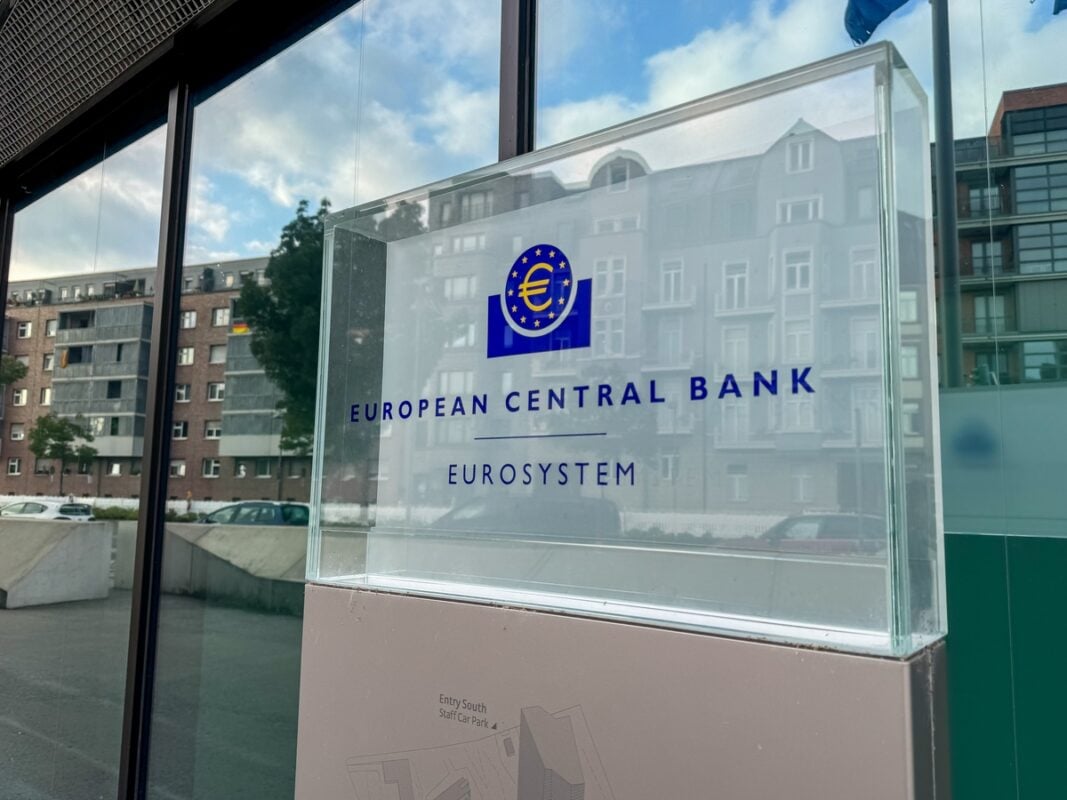TLDR
- ECB warns non-EU stablecoins threaten euro stability, urges stricter oversight.
- Lagarde pushes EU lawmakers to close loopholes in stablecoin regulation.
- ECB calls for bans on foreign stablecoins lacking robust EU equivalence.
- MiCA faces stress as non-EU stablecoins exploit regulatory gaps in Europe.
- Stablecoin race heats up: ECB warns euro at risk from U.S. and China moves.
The European Central Bank (ECB) has intensified calls for stricter regulation on stablecoins issued outside the European Union. ECB President Christine Lagarde warned that stablecoins not fully covered by the EU’s Markets in Crypto-Assets (MiCA) framework present serious risks. These concerns have reignited debate on how to secure the EU’s financial system from unregulated foreign digital assets.
Non-EU Stablecoins Pose Risks to Euro Stability
Stablecoins issued by non-EU entities operate beyond the full reach of MiCA, exposing gaps in legal oversight. The ECB believes these gaps could be exploited, especially in schemes where EU and non-EU firms jointly issue stablecoins. Such joint issuance enables foreign issuers to benefit from EU market access without meeting strict EU standards.
This structure allows potential regulatory arbitrage, undermining the EU’s financial safeguards. Moreover, in times of market stress, redemption pressure could concentrate on EU entities that follow MiCA rules. Since only part of the reserves are held within the EU, the region may not effectively handle large-scale redemptions.
Lagarde has urged lawmakers to ensure foreign stablecoin issuers meet equivalent regulatory benchmarks. Without these measures, she warned of systemic risks that could spill over into the wider financial system. The ECB seeks legal tools that ensure cross-border cooperation and enforcement.
Joint Issuance and Regulatory Arbitrage Threaten MiCA Integrity
MiCA mandates stablecoin issuers in the EU to hold full reserves and allow redemption at face value. However, only the EU component must meet these requirements in jointly issued stablecoins. The foreign counterpart, meanwhile, may be subject to weaker or no oversight at all.
This setup creates loopholes that undermine MiCA’s enforcement. It also exposes the euro to potential outflows if users favor stronger regulatory environments elsewhere. The ECB stressed that stablecoins must not be allowed to bypass EU rules through cross-jurisdictional schemes.
To prevent such regulatory gaps, Lagarde recommended banning foreign stablecoins from EU markets unless they operate under “robust equivalence regimes.” These regimes must guarantee redemption at par and ensure adequate reserve backing. The ECB also emphasized the importance of tightly governing how assets are moved across borders.
Global Stablecoin Competition Raises Pressure on EU Framework
The United States has passed new stablecoin laws that may benefit US-based issuers and dollar-backed coins globally. These regulations could draw users away from euro-pegged stablecoins, threatening the euro’s role in global payments. ECB board member Piero Cipollone previously warned of declining euro deposits due to foreign regulatory advantages.
China is reportedly exploring a stablecoin backed by its yuan, further complicating the global landscape. The dollar’s rising dominance and growing interest in the yuan add competitive pressure on the euro. The ECB now sees an urgent need to level the regulatory playing field.
Lagarde stressed that strong international cooperation is essential to prevent fragmentation in stablecoin oversight. Without harmonized rules, regulatory weak spots may attract high-risk issuers. The ECB remains committed to securing the euro zone’s financial system through updated and comprehensive stablecoin regulation.





